John Fischer
Artist John Fischer Biography
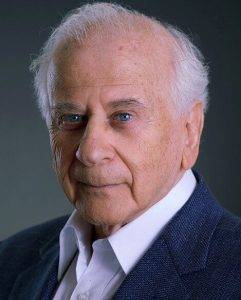
Born in Belgium in 1930. Lived in Antwerp until the WWII bombing of Antwerp May 10, 1940. Wartime in Vichy France was fraught with dangers of deportation and hunger. A key to understanding Fischer’s bread sculpture works. He escaped with his family at the last possible moment as Vichy turned enthusiastically pro-Nazi. Across the Mediterranean to Tunisia, train to Casablanca and a terrifying 18 day crossing to the new world. (A brief stop-over in Casablanca marked a turgid crossing on a tramp steamer to Cuba.) Fischer arrived in New York City in April 1943.
Fischer began painting at fourteen after winning a prize for art, by public school students, for an India ink called “Purim Clown.” (2nd prize city-wide) His early paintings include “Cabin in the Storm” and “Two Roses” (surreal flowers without stems) both of which represent personal dream content. The drawings are from nature and still lives, common objects around the house. At this time, he began experimenting with using wet and dry materials in the same piece and discovers that graphite is the vehicle for his signature line drawing eventually to become the “Line of Lines.”
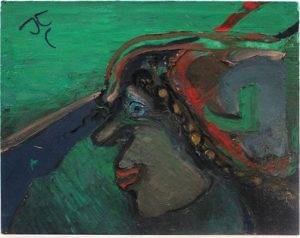
In 1954 F begins a dramatic series of canvases rooted in psychoanalytic content, family and personal evolution revealing the emotional toll of the war years and the chaotic demeaning family ambience. At the conjunction of the tenth street galleries and the start of Pop Art (also referred to as common object art) Fischer began using bread as the primordial material for art. From the clever use of a piece of toast in “Homage to the Square” to torturing breads with piercings and clamps, from bandaging “wounded” breads (stained with blood like paint). Fischer creates a “brick wall” of square loaves, squeezes two breads in a pipe vise (“Marriage” 1963) an expires a rye bread by squashing it in a vise-grip. (“Dead Bread” Bronze.1963-65)
Fischer’s bread sculptures were praised by Dali who said in his characteristic accent “You are first legitime Bread Sculptor.”
At the same time Duchamp recognized that the piece of Toast in “Homage to a Square” (1962) was contemporary object art. Fischer’s protests and anti-war stance is antithetic to cool Pop Art dedicated to poker faced nonsense.
Fischer’s art was anything but cool. Red hot expressive content, horrific and hilarious, symbolic but all too real, characterizes this body of work that bridges New Realism and Pop Art.
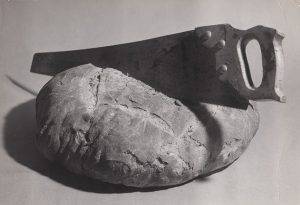
In 1967 John Fisher began the “Love Me Love My Bread” public bakes. The idea of taking art out of the studio directly to the public by direct participation in the forming and baking process was an instant success. A different kind of happening.
He invaded Loeb Student Center at NYU and dumped a huge mountain of day old breads, set up tables with hand saws and hammers and invited the public to participate. It resulted in a phenomenal bread fight. (reviewed in The Village VOICE). Participatory events were produced by Fischer as “The Loafers” The Loafers could go anywhere and set up and oven of refractory bricks. These events were held in over 25 venues between 1967 and 1974 including Everson Museum, Syracuse 1973, New York Cultural Center, 1974, Brooklyn Museum, Bkln, NY, Central Park Sheep Meadow (1972) Jewish Home for The Aged, ArtPark, Lewiston, Maine; NY State Fair (1972) etc. The Loafers was a non profit supported by National Endowment for ther Arts, NY State Council on the Arts, NY City Dept. of Cultural Affairs, local sponsors.
In 1966 Mass Arts approached Fischer with an offer to produce and distri bute his designs made with baked goods: Earrings, Broaches, Tie-Clasp, with Ritz Crackers, Gold Fish soup croutons, Tea Bags, Pretzles,Mini Bagels etc. Fischer agreed to design them but formed “The Real Thing” to manufacture and distribute including providing Mass Arts with a steady allocation. The designs were an immediate success. Fischer’s appeared on the Tonight Sow with Johnny Carson , The Merv Griffin Show, numerous talk programs. (1966) The Keebler Co. commissioned a mural for their corporate office in Chicago.(1967)
Fischer’s Pretzel Necklace was featured at MOMA NY in the exhibit of Jewelry by Contemporary Painters and Sculptors(1968) as reported in Art in America with a full page illustration. The exhibit travelled to many venues incljuding the STaedelojk Museum in Amsterdam, Ne.
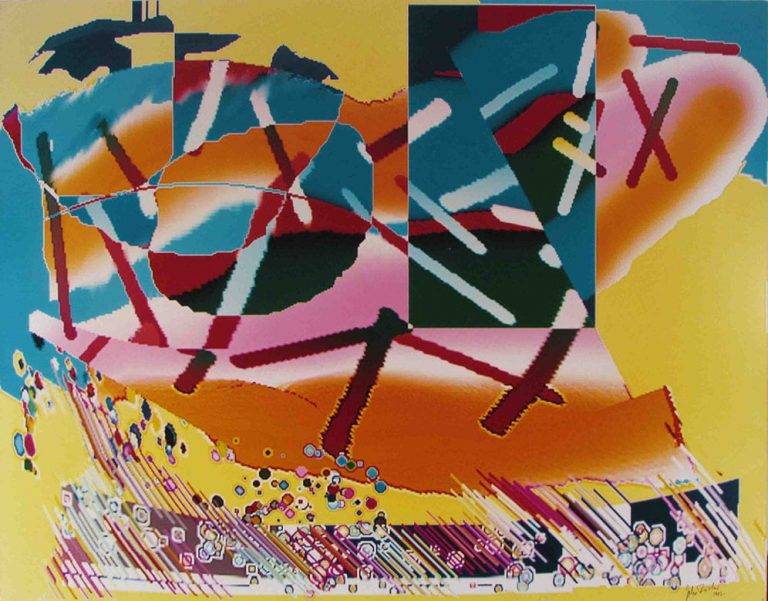
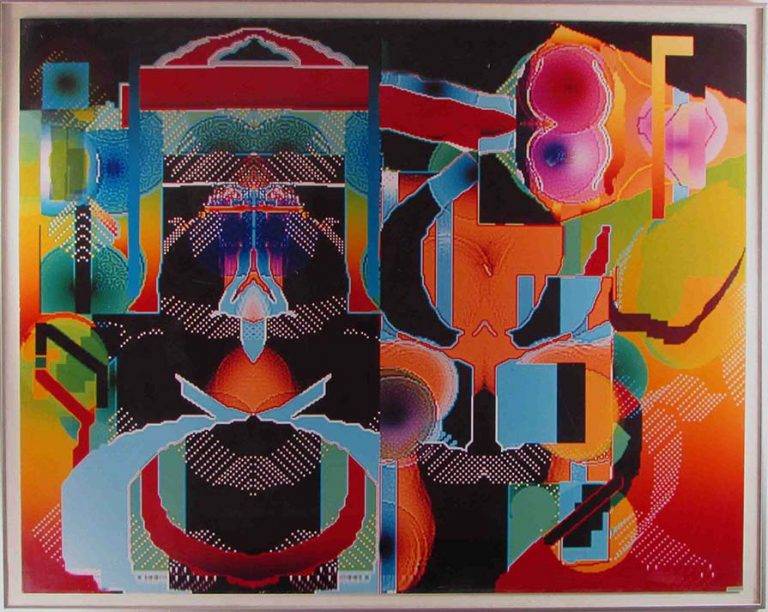
At the same time Fischer continue to explore horizontal extension creating the Scrolls and the concept of the “endless painting”. The Scrolls were exhibited on the crude but effective “scroll exhibitor” on Swiss Romande TV, Geneva, Switz.; and a retrospective of paintings at Schloss Hardenberg Museum, Velbert. (1983) John Fischer is often called a Renaissance Man.
Parallel with the Bread Sculptures, Painting and public participation events. Fischer created the Loft Jazz venue ENVIRON. (1975-’78) with Perry Robinson and the Dave Brubeck Famil. ENVIRON became a major presenting organization dedicated to unheralded contemporary artists, jazz musicians, dancers and performing composers who came from all over the world to present uncensored their new works. The “Loft Jazz Festivals” attracted crowds. Fischer’s INTERface Ensemble was invited to the Berlin JazzTage festival representing ENVIRON (1977) as a creative alternative environment.
`Fischer moved to Geneva, Switzerland in 1980. His multifaceted activities continued as he toured Europe both with painting and sculpture exhibitions and music concerts in Germany, Italy, Switzerland, Belgium, Holland, Poland, Lithuania, Russia and others. Fischer is an innovative original. He has made successes in projects never done before. (Bread Sculptures, Real Thing Jewelry, Public Baking Festivals and Happenings; Scrolls “Endless Painting” The Line of Lines.) In 1979 he discovered the Computer. He took to it as a fish to water especially with the advent of color and graphic interfaces. The early pieces can be seen in the “MacIntosh Sketchbook”.
COLOR RENAISSANCE: Fischer pioneered painting on digital platforms especially the Mac. Fischer began with the precursor of Adobe Photoshop (1986). He calls digital art “Electronic Paintings”. He discovered in the computer software a universe of colors and forms not found in traditional art materials. A Color Renaissance. He created a major body of works exploring the new “endless” possibilities of digital images. Fischer hope Computer Generated images will become accepted as legitimate medium for Fine Art.
His works have been exhibited in museums and galleries in Germany, Switzerland and the US. (1992 to present, including a Fifteen Year Retrospective in 2002)
Fischer is the multifaceted contemporary artist who began during “The Age of Anxiety” and has evolved into the “New Age” not missing a beat.
Recent Videos (1998 -2010) and Poetry Collections (“What’s Better” (2005) ‘Love Condition” (2007) round out the oeuvre.
”No collection is Complete without a John Fischer”

